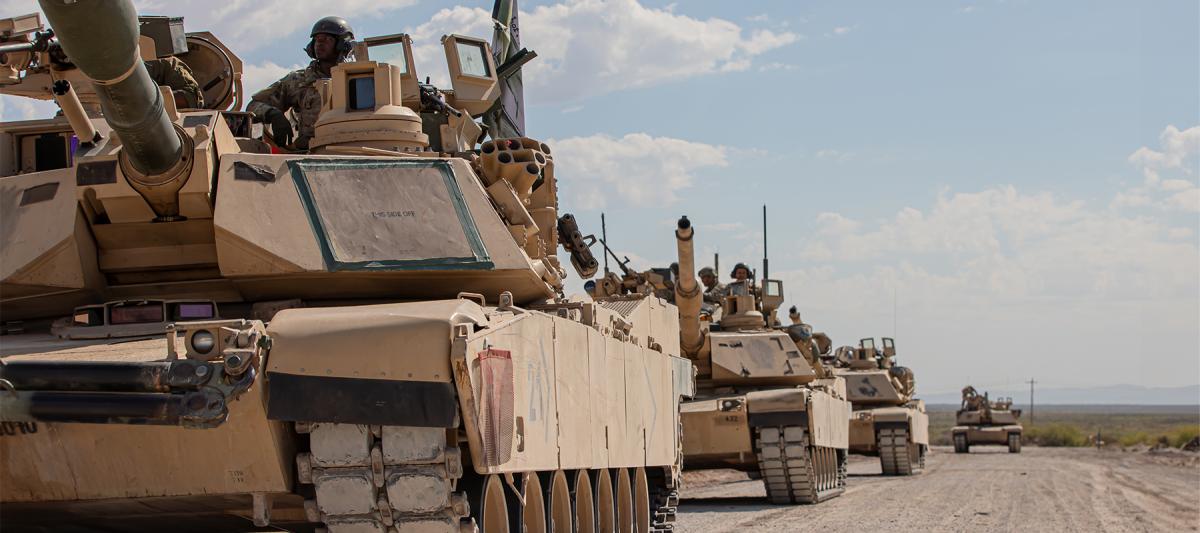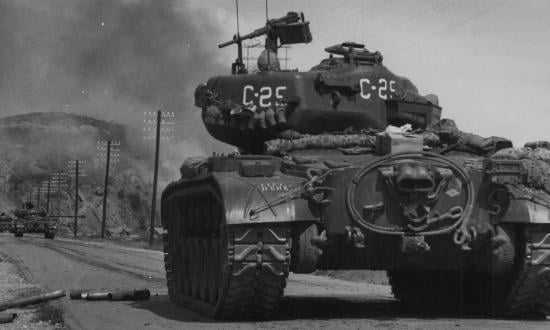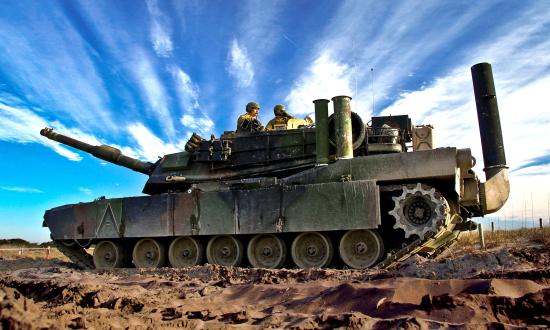Force Design 2030 has yet to provide the Marine Corps a suitable replacement for the capabilities of the recently divested M1A1 Abrams tank. While emerging doctrine focused on China—such as Littoral Operations in a Contested Environment and others—has little to say regarding offensive ground maneuver, it is not difficult to imagine a future conflict in which Marines would be fighting in more typical ground or urban environments. After all, the world is full of threats to U.S. interests besides China.
Ground Maneuver Remains Essential
The Russian invasion of Ukraine has revived large-scale combat operations and demonstrated the continued viability of the offensive. To prepare for similar scenarios, then-Assistant Commandant of the Marine Corps General Eric Smith wrote in 2022, “We will continue to task organize and train units for crisis response, raids, and assaults.” While conventional ground assaults are not a key line of effort in deterring or defeating China, there still are scenarios that would require Marines to conduct conventional ground maneuvers.
As such, Marines must ask how they can accomplish that mission without organic tanks. Colonel Tim Barrick raised this issue in 2022, asking, “Can a light infantry force seize ground or destroy an entrenched enemy—especially in urban terrain—without armor?”The answer is yes, but light infantry units will suffer higher casualties and face lower chances of success in doing so. Without tanks, an infantry unit lacks the capability to rapidly close with an enemy defensive position, reduce its fortifications, and penetrate that opening.
Armored vehicles are unquestionably vulnerable to multiple, relatively cheap methods of antiarmor attack, and tanks must expose themselves to maneuver close enough to engage the enemy’s defensive positions. However, fighting in Nagorno-Karabakh and in Ukraine has shown that tanks still can have a decisive impact on offensive and urban operations. Moreover, as antiarmor capabilities improve, armor technology and tactics will adapt to increase survivability. This is already the case in Ukraine, where new methods for hiding thermal signatures, adding protection from top down attack, and adapting employment options have improved tank survivability. Of course, if tanks are now more vulnerable on the modern battlefield, unarmored units are even more so. As Marine Corps Colonel David Johnson aptly described, “If tanks were vulnerable, then dismounted infantry were meat.”
Filling in the Gap
So far, Force Design 2030 has not provided an adequate organic replacement for the combined protection, mobility, and firepower of tanks. The amphibious combat vehicle and advanced reconnaissance vehicle (ARV) do not match the firepower and protection of a main battle tank. Their relatively inferior armor and main gun are inadequate for closing with and reducing a prepared defensive position, especially if the enemy has tanks of its own. Even if equipped with antitank missiles, armored personnel carriers do not have the armor to survive antiarmor weapons or artillery.
Loitering munitions, javelins, and high-mobility artillery rocket systems (HIMARS) may increase firepower, but they offer no protection or mobility to the infantry in the attack. In a perfect situation, precision fires from HIMARS can reduce an enemy defensive position and javelins/loitering munitions can handle surviving strongpoints or counterattacks—but the enemy still gets a vote. Weather and enemy electronic warfare can neutralize loitering munitions. An infantry unit may not be able to carry enough missiles and rockets to defeat an armored counterattack, or enemy indirect fire could prevent antitank gunners from prosecuting targets. Finally, tanks have an undeniable effect on morale. Their shock value has been a mainstay of their success since they first rumbled into the Battle of the Somme.
Bottom line, if Marines find themselves tasked to seize and hold a critical position, they will wish they had tanks.
That is where the Army will come in, supposedly. Today, the Marine Corps under Force Design 2030 assumes the tanks they do not have will arrive when needed. But without organic tanks with which to train, maintaining proficiency in tank-infantry integration and developing armor employment tactics will be challenging.
Fortunately, there are options for training Marines in tank integration and developing armor employment doctrine:
- Send Marine units to train with Army units and vice versa. Incorporate Army armor units into Marine exercises, especially the Integrated Training Exercise and the large-scale force-on-force Marine Air-Ground Task Force Warfighting Exercise. The same can be done in combined exercises with partner-nation armor units.
- Absent real tanks, simulate them in training. Germany used cardboard mounted to bicycles to practice tank integration following World War I.1
- Incorporate armor tactical decision games, case studies, and decision-forcing cases in training plans.
- Keep armor employment standards in the training and readiness manuals and continue to teach them at the infantry schoolhouses.
- Continue to update armor employment doctrine, such as Marine Corps Reference Publication 3-10B.1: Tank Platoon and Marine Corps Warfighting Publication 3-10: MAGTF Ground Operations, based on outcomes in Ukraine and other conflicts. More important, Marines need to continue reading doctrine and history involving tanks.
Looking Forward
Today, tank capabilities often are equated to those of horses, but the comparison misses a key difference. While the capabilities of cavalry horses were replaced by vehicles, the same cannot be said for tank capabilities. The weapon system—or combination of systems—that can provide protection, mobility, and firepower superior to that of a tank has yet to be discovered. Going forward, Marines must shift from discussing tanks vs. no tanks (that ship has sailed) and instead ask how the Marine Corps can remain prepared to employ tanks when the situation calls for it.
Marines of the future will likely find themselves fighting alongside tanks from the Army or an allied armored force. However, it is not enough simply to possess tanks. The British and French had more and better tanks than the Germans at the onset of World War II, but they lacked the institutional knowledge needed to exploit their advantage.2 The Marine Corps risks making the same mistake if it fails to maintain proficiency in armor integration. To be successful on the battlefields of the future, Marines must overcome the challenges of losing organic tanks and remain adept in the evolving tactics of armor employment.
1. Mary R. Habeck, Storm of Steel: The Development of Armor Doctrine in Germany and the Soviet Union, 1919–1939 (New York: Cornell University Press, 2003).
2. Max Boot, War Made New: Technology, Warfare, and the Course of History, 1500 to Today (New York: Avery, 2007).





